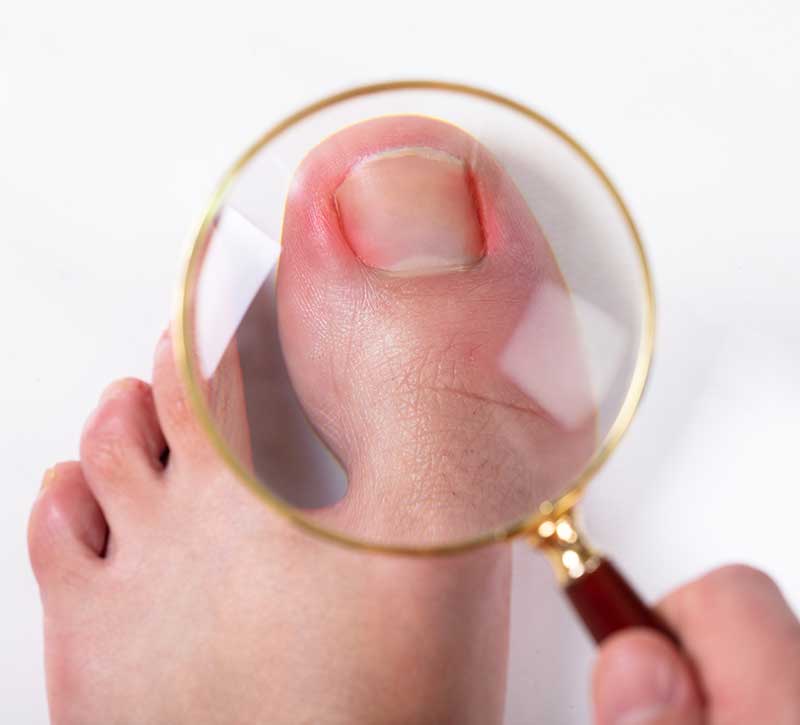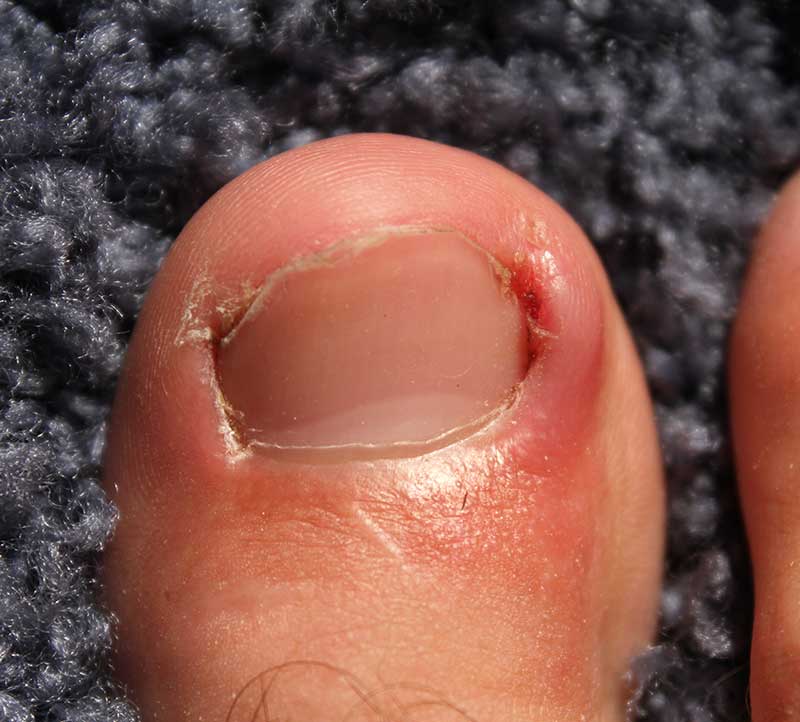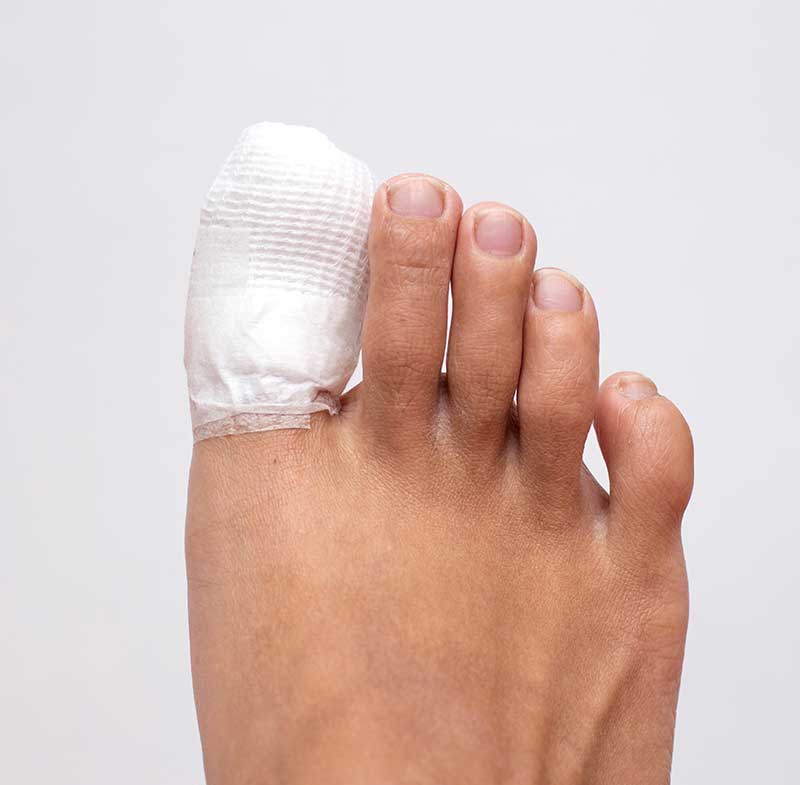 What is an ingrown toenail?
What is an ingrown toenail?
An ingrown toenail occurs when the edge of a toenail becomes embedded into the surrounding skin. The toenail pushes into the skin causing it to become inflamed and painful.
After a short period of time, the continued irritation of the skin by the toenail will cause hard skin to form. The build-up of skin under the toenail increases pain. Often the nail will cut into the skin and cause infection. An infected ingrown toenail will cause excruciating pain.
Ingrown toenail most commonly happens to the big toes but all 10 toenails can develop ingrown nails. An ingrown toenail is very common in teenagers but occurs across all ages. People with medical conditions like diabetes or poor circulation (vascular disease) that are not well managed can suffer serious complications without ingrown toenail treatment.
How to treat an ingrown toenail
Ingrown toenails always require treatment for a patient to be comfortable. Importantly, patients with medical conditions like diabetes or poor circulation are at significant risk of serious complications. Such complications include bone infection (osteomyelitis) leading to toe, forefoot or below-knee amputation if ingrown toenails are ignored.

In many cases, the podiatrist will treat the nail edge to make the patient comfortable and to prevent ingrown toenails from happening again. Our podiatrists provide advice on how to maintain good foot health to prevent ingrown toenails by appropriate home care.
Some patients are unable to provide their own toenail care due to arthritis or other medical conditions. In these cases, often the best way to manage ingrown toenails is to have regular visits to the podiatrist every 6 to 12 weeks. Footwear often needs to be assessed to ensure it is not contributing to an ingrown toenail problem.
Our podiatrists will always check patient footwear to make sure it is not causing the ingrown toenail. Recommendations on the best footwear to use are always provided to our patients. In other cases, conditions like flat feet or bunions have caused too much pressure on the toenail making it become ingrown.
If flat feet, high arched feet, bunions or hammer toes have caused ingrown toenails they need to be treated. Where appropriate our podiatric surgeon will prescribe antibiotics to manage infection Read more. In cases where ingrown toenails keep happening or infection occurs a simple procedure can be performed.

Called a Phenol and Alcohol (P & A) procedure it is performed under local anaesthetic to permanently remove a small portion of the nail. This effective foot surgery is performed in the office.
Oral sedation is available for patients who are anxious about surgery in the office. However, most patients are very comfortable having the P & A with just local anaesthetic. If there is a medical reason the P & A can be provided in a day surgery hospital under twilight anaesthesia.
The procedure requires no stitches, and the foot only needs to be kept dry for 24 hours. Patients only require 1 to 3 days off work and are back to normal activities within 1 to 2 weeks.
